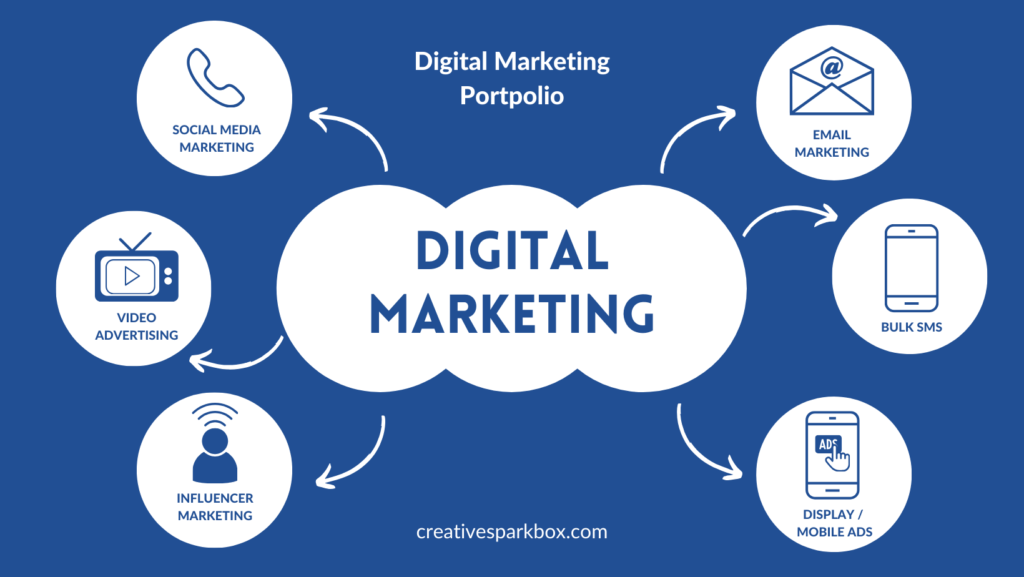Mastering the Art of Digital Marketing Agency Portfolios: A Comprehensive Guide to Success
In the ever-evolving landscape of digital marketing, where businesses vie for attention in crowded online spaces, the importance of a compelling portfolio cannot be overstated. A digital marketing agency’s portfolio serves as its visual resume, showcasing past successes, creative prowess, and the ability to drive results for clients across diverse industries. In this extensive guide, we delve deep into the intricacies of crafting an exceptional digital marketing agency portfolio, offering valuable insights, expert strategies, and actionable tips to help you stand out in a competitive market.

Unveiling the Power of Digital Marketing Agency Portfolios
Before we embark on the journey of portfolio creation, it’s crucial to understand why portfolios hold such immense significance for digital marketing agencies:
1. Establishing Credibility and Trust
In a world inundated with marketing noise, trust is a scarce commodity. A well-curated portfolio acts as a testament to your agency’s credibility, showcasing real-world examples of your ability to deliver results. By presenting case studies, testimonials, and success stories, you instill confidence in prospective clients and differentiate your agency from the competition.
2. Showcasing Expertise and Specializations
Your portfolio is an opportunity to highlight your agency’s areas of expertise and specialization. Whether it’s SEO, social media marketing, content creation, or paid advertising, your portfolio should demonstrate proficiency in various digital marketing disciplines. By showcasing diverse projects and campaigns, you position your agency as a versatile partner capable of meeting the unique needs of different clients.
3. Crafting Compelling Case Studies
Each project in your portfolio should be accompanied by a detailed case study that outlines the client’s objectives, the challenges faced, the strategies implemented, and the results achieved. Be sure to include specific metrics and KPIs to quantify the success of each campaign. Use visual elements such as charts, graphs, and screenshots to enhance the readability and visual appeal of your case studies.

4. Incorporating Client Testimonials and Reviews
Client testimonials and reviews provide social proof of your agency’s capabilities and help build trust with prospective clients. Reach out to satisfied clients and ask them to provide feedback on their experience working with your agency. Include their testimonials alongside relevant projects to reinforce the impact of your work.
5. Showcasing Creative Assets
In addition to written case studies and testimonials, incorporate creative assets such as videos, infographics, and interactive content to bring your portfolio to life. Visual elements not only make your portfolio more engaging but also provide a tangible representation of your agency’s creativity and design capabilities.
6. Highlighting Industry Recognition and Awards
If your agency has received any industry awards or recognition, be sure to highlight them in your portfolio. Awards serve as validation of your agency’s expertise and can help differentiate you from competitors. Whether it’s a prestigious industry award or a local accolade, showcasing recognition from third-party sources can boost your credibility and authority in the eyes of potential clients.
7. Providing Thought Leadership Content
In addition to showcasing your past work, use your portfolio as a platform to share thought leadership content and insights on industry trends and best practices. Write blog posts, whitepapers, or case studies that demonstrate your agency’s expertise and offer valuable insights to prospective clients. Positioning yourself as a thought leader can help attract clients who are seeking guidance and expertise in navigating the complex world of digital marketing.

8. Ensuring Accessibility and User Experience
A well-designed portfolio is not only visually appealing but also user-friendly and accessible across different devices and platforms. Optimize your portfolio for mobile devices, ensure fast loading times, and make navigation intuitive and seamless. A positive user experience will encourage visitors to explore your portfolio further and learn more about your agency’s services.
9. Including Clear Calls-to-Action (CTAs)
Finally, don’t forget to include clear calls-to-action (CTAs) throughout your portfolio to encourage visitors to take the next step. Whether it’s contacting your agency for a consultation, requesting a quote, or signing up for your newsletter, make it easy for visitors to engage with your agency and initiate a conversation.
Conclusion: Elevating Your Agency's Brand with a Stellar Portfolio
In today’s competitive digital landscape, a compelling portfolio is essential for showcasing your agency’s expertise, creativity, and track record of success. By following the blueprint outlined in this guide, you can create a portfolio that not only impresses potential clients but also serves as a powerful marketing tool for growing your agency’s brand and attracting new business. With careful planning, strategic storytelling, and a commitment to excellence, your portfolio can become a showcase of your agency’s capabilities and a beacon of success in the digital marketing industry.
